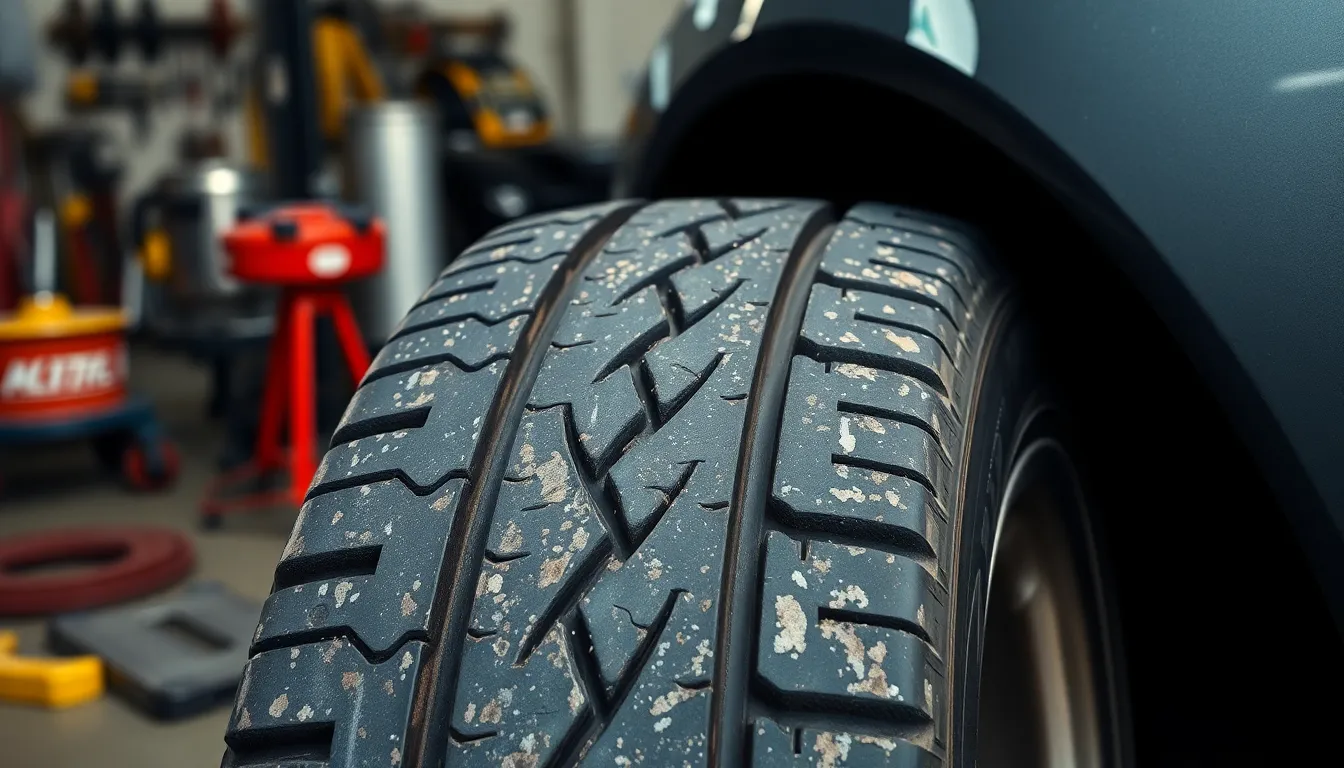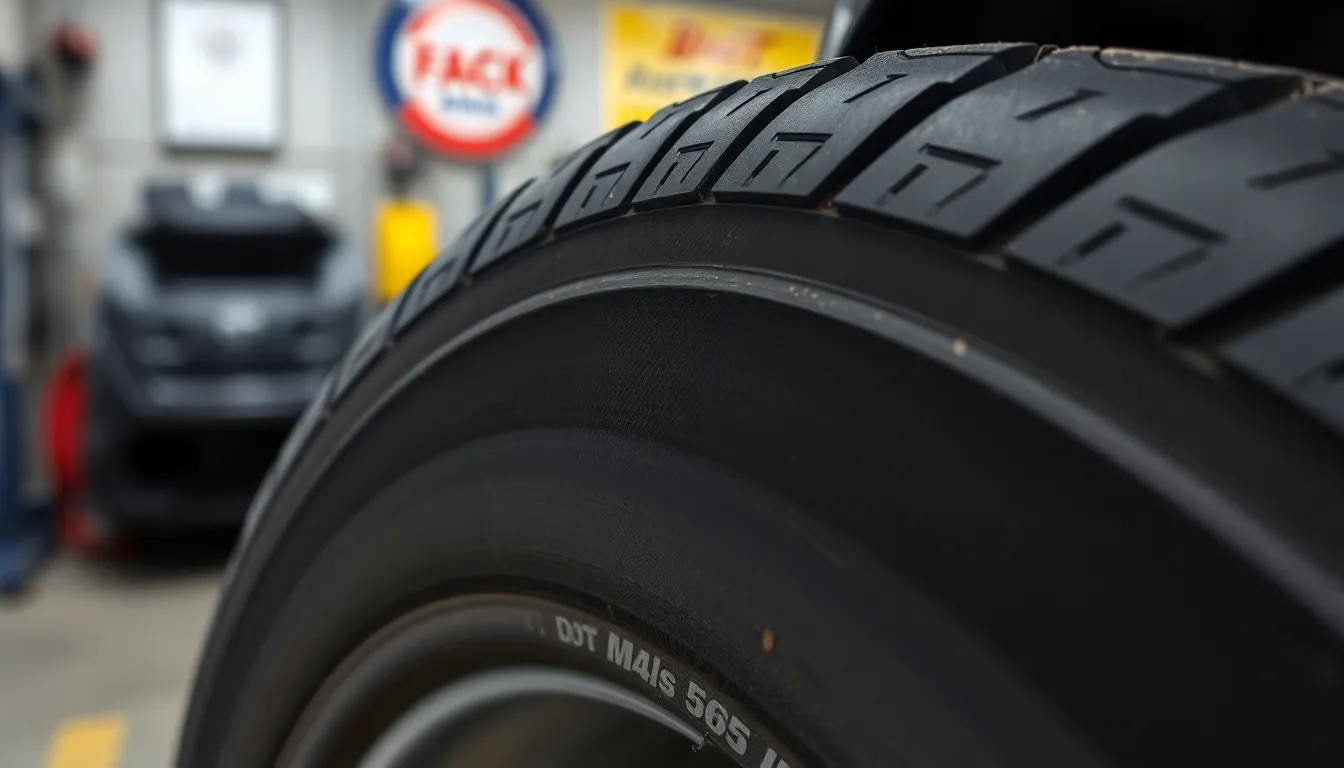Ever wondered how old your tires really are? Most drivers assume tire age isn’t critical but knowing when your tires were manufactured can literally save your life. Old tires become dangerous even with plenty of tread left because rubber compounds deteriorate over time.
We’ve all been there – standing in a tire shop wondering if we’re getting fresh rubber or inventory that’s been sitting around for years. The good news? Every tire has a secret code that reveals its exact manufacturing date. This simple four-digit code can help you avoid purchasing old stock and determine when it’s time to replace your current tires.
Understanding tire age isn’t just about getting your money’s worth. Tires older than six years pose serious safety risks regardless of their appearance. We’ll show you exactly where to find this manufacturing code and how to decode it so you can make informed decisions about your vehicle’s safety.
Understanding Tire Date Codes
Tire date codes provide the essential information needed to determine when manufacturers produced your tires. These standardized codes help us identify tire age and make informed safety decisions about vehicle maintenance.
What Are DOT Date Codes
DOT date codes represent the Department of Transportation’s standardized system for marking tire manufacturing dates. The DOT requires manufacturers to imprint these codes on every tire sold in the United States.
The current system uses a four-digit format that indicates the week and year of production. The first two digits represent the week number (01-52) while the last two digits indicate the year. For example, “2318” means the tire was manufactured during the 23rd week of 2018.
Tires manufactured before the year 2000 used a three-digit system, making them easily identifiable as older stock. These older tires featured only the week and final digit of the year, such as “248” for the 24th week of 1998.
Where to Find the Date Code on Your Tire
The DOT code appears on the tire’s sidewall as part of a longer alphanumeric sequence. We typically find this code on the inner sidewall facing the vehicle rather than the outer side visible when looking at the parked car.
Look for a series that begins with “DOT” followed by 10-12 characters including letters and numbers. The four-digit date code sits at the end of this sequence, often enclosed in an oval or rectangular border to distinguish it from other markings.
Manufacturers sometimes place the complete DOT code on only one sidewall of the tire. Check both sides if you can’t locate the four-digit date portion, as partial DOT information may appear on the opposite sidewall without the manufacturing date.
The date code positioning varies by manufacturer and tire size, but it’s always part of the DOT certification marking. Cleaning the sidewall with a damp cloth helps reveal faded or dirty codes that might otherwise be difficult to read.
How to Read Tire Manufacturing Dates

Reading tire manufacturing dates requires understanding the DOT code system that appears on every tire sidewall. We’ll break down the different formats manufacturers use depending on when your tires were produced.
Decoding the Four-Digit Date Code
Modern tires manufactured after 1999 display a four-digit code at the end of the DOT marking. The first two digits represent the week of manufacture while the last two digits indicate the year. A tire showing “1219” was manufactured during the 12th week of 2019. The DOT code appears as a series of letters and numbers with this critical date information positioned at the very end of the sequence.
Understanding Week and Year Format
Week numbers range from 01 to 52 corresponding to the 52 weeks in a calendar year. Year digits show the last two numbers of the manufacturing year such as “24” representing 2024. The code “2315” translates to the 23rd week of 2015. This standardized format makes determining tire age straightforward once you locate the proper digits on the sidewall.
Reading Older Three-Digit Codes
Tires produced before 2000 use a three-digit dating system instead of the current four-digit format. The first two digits indicate the week while the single last digit represents the year within the 1990s decade. A code reading “258” means the tire was manufactured during the 25th week of 1998. These older tires with three-digit codes are considered aged and may not meet current safety standards regardless of their tread condition.
Why Tire Manufacturing Date Matters

Understanding when your tires were manufactured affects vehicle safety and performance in multiple critical ways. Age impacts tire integrity regardless of tread depth or visual appearance.
Safety Implications of Tire Age
Aging tires pose important safety risks even when they appear to have adequate tread depth. Old tires develop cracks and fissures that lead to tread separation and loss of vehicle control during operation. These structural failures occur because rubber compounds deteriorate over time, creating internal weaknesses that aren’t visible during routine inspections. Emergency situations become more dangerous when aged tires fail unexpectedly, potentially causing accidents at highway speeds.
Performance Degradation Over Time
Tire performance declines as rubber compounds lose their structural integrity through natural aging processes. Cracks and fissures form both visibly on the surface and internally within the tire structure, compromising overall reliability. Aged tires lose air pressure faster than newer ones, which affects vehicle handling precision and reduces fuel efficiency. Deteriorating rubber also impacts traction capabilities in wet conditions, extending stopping distances and reducing cornering stability.
Legal and Insurance Considerations
Most tire manufacturers recommend replacing tires six years after their manufacturing date regardless of remaining tread depth. Insurance companies may question coverage decisions when accidents involve overly aged tires, potentially affecting claim approvals and liability determinations. Vehicle inspections in certain jurisdictions consider tire age as a safety factor, which could impact registration renewals. Using tires beyond recommended age limits can create legal liability issues if tire failure contributes to accidents or property damage.
When to Replace Tires Based on Age

Tire age matters more than many drivers realize when it comes to safety and performance. Understanding replacement timelines and warning signs helps protect you from the risks that come with aging rubber.
Industry Recommendations for Tire Replacement
We recommend replacing tires after six years from their manufacturing date regardless of tread depth remaining. This timeline reflects the rubber compound’s natural degradation process that occurs even when tires aren’t frequently used.
Most tire manufacturers support this six-year replacement guideline through their warranty policies and safety documentation. The recommendation accounts for rubber deterioration that happens due to environmental factors like heat, UV exposure, and ozone contact.
Storage conditions affect tire aging significantly even when vehicles sit unused for extended periods. Tires stored in garages or covered areas typically last longer than those exposed to direct sunlight and extreme temperatures.
| Tire Age | Recommended Action |
|---|---|
| 0-6 years | Continue use with regular inspection |
| 6+ years | Replace regardless of tread depth |
| 10+ years | Replace immediately for safety |
Signs Your Tires Are Too Old
Visible cracks in the sidewall or tread area indicate tire aging and potential failure risk. These cracks typically appear as small lines or fissures that become more pronounced over time.
Tread wear indicators showing low tread depth signal replacement time even before the six-year mark. Modern tires include built-in wear bars that become visible when tread depth reaches 2/32 of an inch.
Bulges or blisters on the tire surface suggest internal structural damage common in aging tires. These deformities create weak points that can lead to sudden tire failure during driving.
Hardening of the rubber compound makes tires less flexible and reduces their grip on road surfaces. You can test this by pressing your fingernail into the tread; old rubber feels noticeably harder than fresh tire material.
Frequent air pressure loss without visible punctures often indicates aging seals and rubber deterioration. Older tires lose air more quickly due to microscopic cracks in the rubber that allow air to escape gradually.
Common Mistakes When Checking Tire Dates

Checking tire manufacturing dates seems straightforward, but many drivers make critical errors that can lead to incorrect assessments of tire safety. Understanding these common pitfalls helps ensure accurate tire age determination.
Misreading the Date Code Format
The most frequent error occurs when drivers misinterpret the date code format based on the tire’s age. Tires manufactured before 2000 use a three-digit code where the first two digits represent the week and the last digit indicates the year within a decade. A code reading “389” means the tire was produced during the 38th week of 1989 or 1999, creating confusion about the actual decade.
Modern tires manufactured after 2000 feature a four-digit system that eliminates this ambiguity. The first two digits still indicate the manufacturing week, while the last two digits specify the exact year. A code like “2119” clearly identifies production during the 21st week of 2019, removing any guesswork about the manufacturing decade.
Drivers often assume all tires follow the same coding system without checking the manufacture date format first. This assumption leads to miscalculating tire age by entire decades, particularly with older inventory that might still use the three-digit system.
Confusing Manufacturing Date with Other Numbers
Tire sidewalls contain many codes and numbers beyond the manufacturing date, creating opportunities for misidentification. Load ratings, speed ratings, and size specifications appear throughout the sidewall in similar numeric formats. The manufacturing date code appears only within the sequence that starts with “DOT” followed by the Tire Identification Number.
Many drivers focus on prominent numbers like tire size markings or pressure ratings instead of locating the exact DOT sequence. Speed ratings such as “H” or “V” and load index numbers like “91” or “103” commonly get mistaken for date information because they appear in similar positions on the sidewall.
We recommend systematically searching for the “DOT” marking first, then identifying the final three or four digits within that sequence. These final digits represent the manufacturing date, while other numbers scattered across the sidewall serve different identification purposes. Always verify that you’re reading numbers from the correct DOT sequence rather than standalone markings elsewhere on the tire.
Conclusion
Knowing how to read tire manufacturing dates empowers us to make safer driving decisions and protect our investment in quality tires. We’ve seen that a simple four-digit code can mean the difference between reliable performance and potential road hazards.
Regular tire age checks should become part of our routine vehicle maintenance alongside oil changes and brake inspections. By staying vigilant about manufacturing dates we can avoid the costly mistakes and safety risks that come with driving on aged rubber.
Remember that fresh tires aren’t just about peace of mind – they’re about ensuring our families reach their destinations safely every time we get behind the wheel.
Frequently Asked Questions
How do I find the manufacturing date on my tire?
Look for the DOT code on your tire’s sidewall, typically on the inner side. The manufacturing date is a four-digit number at the end of this DOT sequence. If you can’t see it clearly, check both sides of the tire and clean the sidewall if necessary to reveal any faded markings.
What does the four-digit tire date code mean?
The four-digit code represents the week and year your tire was manufactured. The first two digits indicate the week (01-52), and the last two digits show the year. For example, “1219” means the tire was made during the 12th week of 2019.
How old is too old for tires?
Most tire manufacturers recommend replacing tires after six years, regardless of tread depth. This is because rubber naturally degrades over time, developing cracks and losing performance capabilities that can compromise safety, even if the tread still looks good.
What about tires made before 2000?
Tires manufactured before 2000 use a three-digit dating system. The first two digits represent the week, and the last digit indicates the year within the 1990s. For example, “258” means the 25th week of 1998. These tires should definitely be replaced.
Can old tires with good tread still be dangerous?
Yes, absolutely. Even with adequate tread depth, old tires can develop internal deterioration, sidewall cracking, and reduced flexibility. This makes them prone to sudden failure, tread separation, and poor performance, especially in emergency situations or adverse weather conditions.
What are signs that my tires are too old?
Look for visible sidewall cracks, bulges or blisters, hardened rubber that feels stiff, frequent air pressure loss, and obviously low tread depth. These indicators suggest your tires have aged beyond safe usability and should be replaced immediately.
Will insurance cover accidents caused by old tires?
Using tires beyond manufacturer recommendations can complicate insurance claims and create legal liabilities. If tire failure contributes to an accident and the tires were older than recommended replacement age, you may face coverage issues or legal consequences.
Where exactly should I look for the DOT code?
Start by locating the “DOT” marking on the tire sidewall, usually on the inner side facing the vehicle. The manufacturing date code appears as the last set of numbers in this DOT sequence. Avoid confusing it with other numbers like load ratings or speed ratings.

